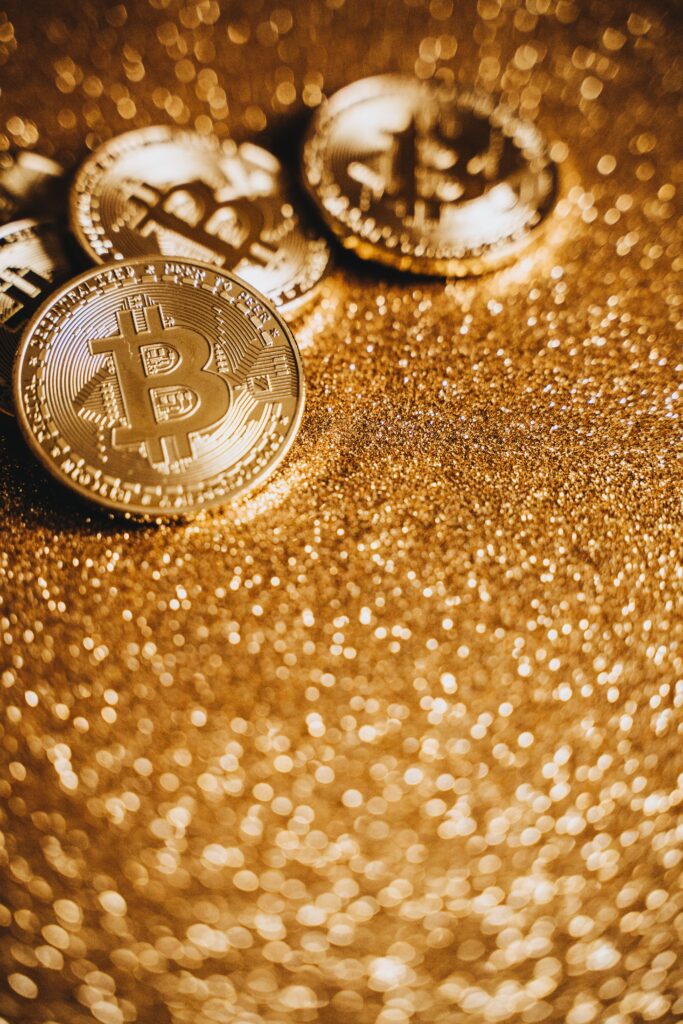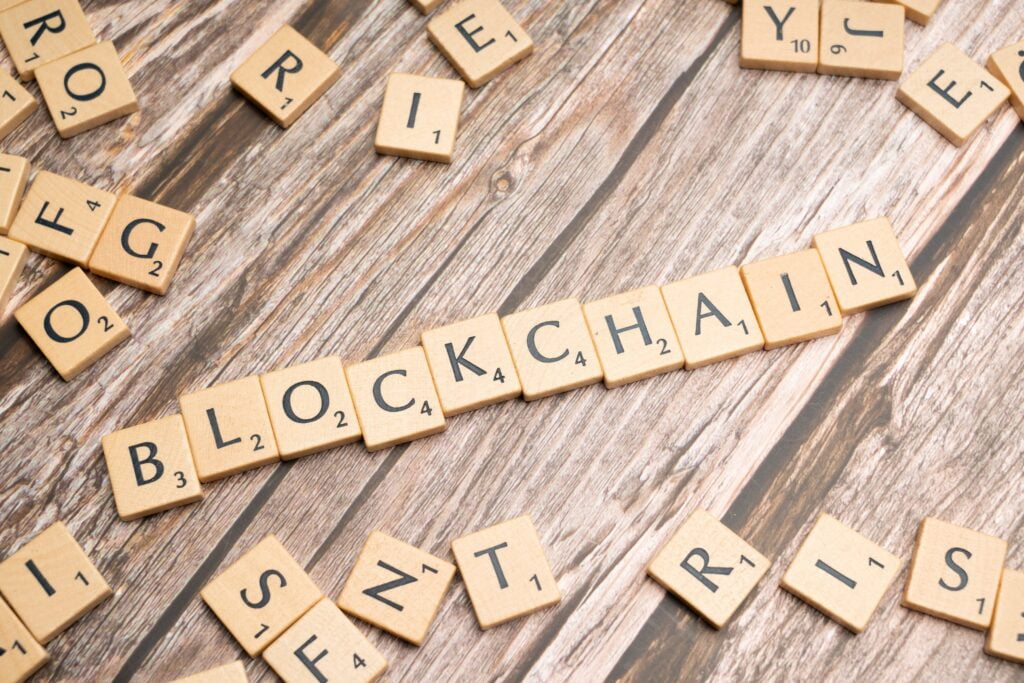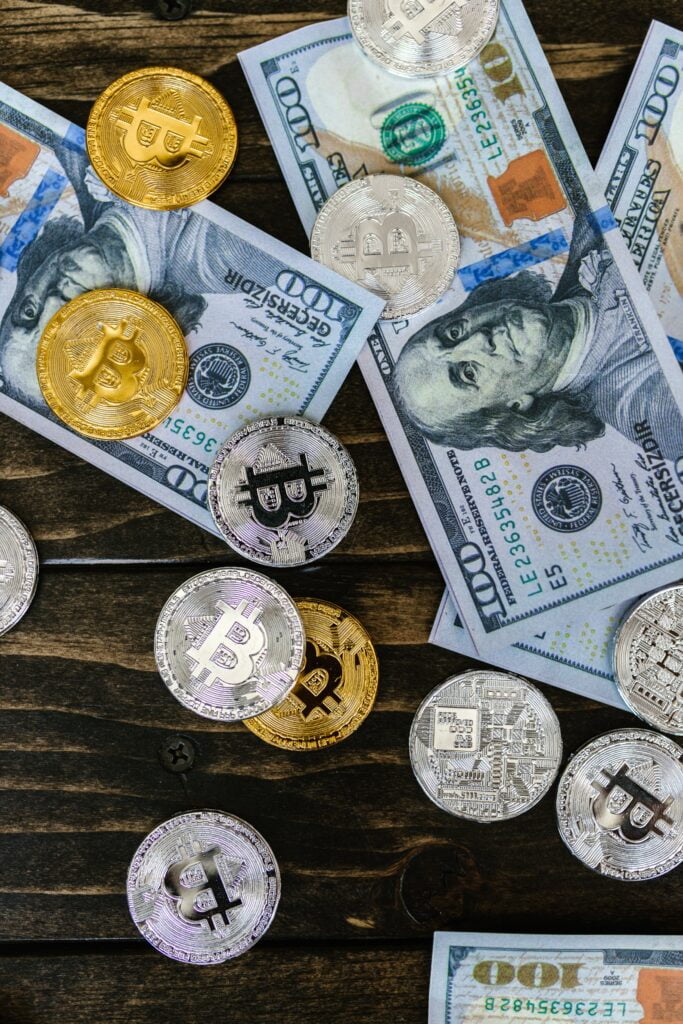Table of Contents
DeFi (Decentralized Finance)

Welcome to the dynamic world of Decentralized Finance DeFi, a revolutionary ecosystem transforming traditional financial paradigms. In this blog, we will navigate through essential aspects of DeFi, exploring key elements such as Secure DeFi Wallets, Risks in DeFi Investments, Top DeFi Projects in 2024. this blog can be a Beginner’s Guide to DeFi Trading.
While the allure of DeFi is undeniable, navigating its landscape comes with inherent risks. We will dissect the Risks in DeFi Investments, providing insights into potential pitfalls and offering strategies to mitigate these challenges. Empowering our readers with knowledge is fundamental to making informed investment decisions within the dynamic DeFi space.
For those embarking on their DeFi journey, our Beginner’s Guide to DeFi Trading will serve as a compass, demystifying complex concepts and providing step-by-step insights. From understanding basic principles to executing trades, this guide aims to equip newcomers with the confidence to navigate DeFi platforms seamlessly.
Additionally, we will showcase the Top DeFi Projects, offering an insider’s look into the most promising and innovative ventures shaping the decentralized financial landscape in 2024. Join us on this exploration of the future of finance, where security, knowledge, and strategic investments converge to redefine the way we engage with financial services.
1. Understanding the Basics
i) Decentralized Finance (DeFi) :
Decentralized Finance (DeFi) marks a revolutionary transformation in the financial sector by harnessing the power of blockchain technology. This innovative approach establishes a financial ecosystem free from the constraints of centralized institutions, fundamentally altering how individuals interact with their finances.
Operating on decentralized networks, Decentralized Finance DeFi ensures increased autonomy for users, enabling them to exercise greater control over their assets and financial operations. Unlike traditional finance, Decentralized Finance (DeFi) facilitates open and accessible financial services, fostering inclusivity and eliminating barriers to entry.
The shift towards decentralized financial systems, characterized by smart contracts and blockchain protocols, not only enhances security and transparency but also empowers individuals globally to participate in a more democratic and efficient financial landscape.
The impact of DeFi extends beyond geographical boundaries, ushering in a new era of financial freedom and innovation.

ii) Top Defi Projects in 2024:
| Protocol | Category | TVL ($ in billion) | Chains |
| Uniswap | Dex | 3.2 | 8 |
| ido | Liquid staking | 13.9 | 3 |
| MakerDAO | CDP | 4.9 | 1 |
| AAVE | lending | 4.9 | 9 |
| JustLend | lending | 3.7 | 1 |
| Summer.fi | lending | 2.1 | 1 |
| Curve Finance | DEX | 2.1 | 13 |
| Compound Finance | lending | 1.8 | 4 |
| Convex Finance | Yield | 1.7 | 3 |
| Rocket Pool | Liquid staking | 1.7 | 1 |
2) Key Components of Decentralized Finance DeFi
Smart Contracts: Smart Contracts are self-executing agreements with pre-programmed terms that automatically execute processes on blockchain platforms. These contracts operate without the need for intermediaries, providing a secure and transparent way to automate various tasks and transactions in a decentralized manner.
Decentralized Ledger: A Decentralized Ledger refers to unchangeable and transparent transaction records stored on a blockchain. This distributed technology ensures that transaction data is securely and permanently recorded across a network of nodes, enhancing transparency, security, and the integrity of the stored information.
Tokens: Tokens are digital assets that symbolize ownership or value on a blockchain. These cryptographic representations enable the transfer and exchange of assets within decentralized networks. Serving various purposes, tokens can signify ownership of assets, represent utility within a platform, or serve as a medium of exchange within the blockchain ecosystem.
3) The Current Landscape of Decentralized Finance (DeFi)
The Decentralized Finance DeFi ecosystem is dynamic, marked by numerous projects that provide a wide array of financial services. Platforms such as Ethereum, Binance Smart Chain, and others play host to a diverse range of decentralized applications (DApps).
These applications contribute significantly to the expanding DeFi landscape, offering users innovative solutions for lending, borrowing, trading, and more. The decentralized nature of these platforms, often governed by smart contracts, enhances accessibility and inclusivity, transforming traditional financial paradigms.
The continuous development of new DeFi projects and the proliferation of DApps underscore the ongoing evolution and adaptability of this groundbreaking financial ecosystem.
You may also like: Unveiling the Power of Blockchain Technology: Changing Future
You may also like: 2024 Navigating the NFT Landscape : Unveiling the complexity of Non-Fungible Tokens

4) Use Cases of Decentralized Finance DeFi
i) Decentralized Exchanges (DEXs):
- Decentralized Exchanges (DEXs):
- Represent a paradigm shift in digital asset trading.
- Enable direct peer-to-peer transactions without traditional intermediaries.
- Operate on blockchain technology for transparency, security, and user control over funds.
- Uniswap’s Role:
- Uniswap, a prominent DEX on Ethereum, is a frontrunner in the space.
- Utilizes an automated market maker (AMM) model for seamless trading of ERC-20 tokens.
- Benefits of DEXs:
- Decentralized nature reduces risks associated with central points of failure, censorship, and hacking vulnerabilities.
- Rising popularity attributed to increased autonomy and a more inclusive financial environment.
- Impact on Financial Landscape:
- DEXs play a pivotal role in reshaping the financial landscape.
- Contribute to the expansion of the decentralized finance (DeFi) ecosystem.
ii) Decentralized Finance Protocols:
- Decentralized Finance Protocols:
- Transformative elements in the blockchain space, exemplified by platforms like Compound and Maker DAO.
- Utilization of Smart Contracts:
- Leverage smart contracts, self-executing code on a blockchain, to facilitate financial activities without traditional intermediaries.
- Compound’s Dynamic Money Market:
- Allows decentralized lending and borrowing, creating a dynamic and autonomous money market.
- Maker DAO’s Stablecoin (Dai):
- Introduces a decentralized stablecoin, Dai, collateralized by various crypto assets.
- Users can lock assets to generate Dai and retrieve collateral upon repayment.
- Innovation in Eliminating Intermediaries:
- Eliminates intermediaries, providing users with greater financial inclusion, transparency, and control over assets.
- Prominence of DeFi Protocols:
- Gained prominence for democratizing finance and offering global access to financial services.
- Minimizes counterparty risk and bureaucracy in the financial landscape.
- Continuous Evolution:
- As the DeFi ecosystem evolves, these protocols continue to redefine traditional financial structures.
iii) Lending and Borrowing Platforms
- Lending and Borrowing in DeFi:
- Aave and similar platforms in DeFi revolutionize lending and borrowing.
- Utilization of Smart Contracts:
- Aave employs smart contracts on the blockchain for lending and borrowing activities.
- Decentralized Nature:
- Users can lend or borrow digital assets without reliance on centralized financial institutions.
- Global Financial Inclusion:
- Elimination of intermediaries promotes financial inclusion globally.
- Decentralized Liquidity Pool:
- Aave’s platform functions as a decentralized liquidity pool.
- Earn Interest and Access Liquidity:
- Users can earn interest on deposited funds or access liquidity by borrowing against collateral.
- Efficiency and Cost Reduction:
- Absence of traditional gatekeepers enhances transaction efficiency, reduces costs.
- Open and Transparent Ecosystem:
- Ensures a more open and transparent financial ecosystem.
- Empowering Individuals:
- Lending and borrowing platforms like Aave empower individuals, providing greater control over financial activities.
- Inclusive and Accessible Landscape:
- Fosters a more inclusive and accessible global financial landscape.
iii) Secure DeFi Wallets:
Secure DeFi Wallets play a pivotal role in safeguarding assets within the dynamic realm of Decentralized Finance (DeFi). As the backbone of user autonomy, these wallets ensure that digital assets are shielded from potential threats. Employing robust encryption and decentralized authentication methods, Secure DeFi Wallets empower users with control over their funds, eliminating reliance on centralized authorities.
Whether it’s hardware wallets, software wallets, or the emerging trend of decentralized autonomous organization (DAO) wallets, the emphasis is on fortifying security measures. In this digital era, where financial sovereignty is paramount, Secure DeFi Wallets serve as a fortress against unauthorized access and potential vulnerabilities. Navigating the decentralized landscape requires not just financial acumen but also a commitment to leveraging cutting-edge security features, making Secure DeFi Wallets an indispensable tool for individuals seeking a trustworthy and resilient foundation for their decentralized financial endeavors.
5) Challenges and Opportunities in Decentralized Finance DeFi
- Security Concerns:
- DeFi platforms face risks from smart contract vulnerabilities and hacking incidents.
- Mitigation is crucial to build trust in the ecosystem.
- Regulatory Landscape:
- DeFi operates in a regulatory gray area.
- Developing frameworks is essential for ensuring compliance while preserving the decentralized nature of the ecosystem.
- Potential for Financial Inclusion:
- DeFi holds the potential to offer financial services to the unbanked and underbanked.
- It provides an opportunity to address global financial inclusion challenges.
6) Future Prospects of Decentralized Finance (DeFi)
i) Technological Advancements in blockchain technology, scalability solutions, and interoperability are expected to enhance the efficiency and usability of Decentralized Finance (DeFi).
ii) Integration with Traditional Finance: As Decentralized Finance (DeFi) matures, collaboration and integration with traditional financial systems may become more prevalent, bridging the gap between decentralized and centralized finance.
7) Case Studies in DeFi Success
- Uniswap: Uniswap, a decentralized exchange (DEX), achieved success by introducing automated market maker (AMM) functionality, revolutionizing token swaps and liquidity provision.
- Aave: Aave’s decentralized lending and borrowing platform gained prominence by offering users the ability to earn interest on deposits and access liquidity through collateralized loans.
- Compound: Compound’s algorithmic lending platform is a DeFi success, allowing users to lend and borrow various digital assets with interest rates dynamically determined by supply and demand.
- MakerDAO: MakerDAO pioneered decentralized stablecoins, notably Dai, by collateralizing assets, providing a stable and decentralized alternative to traditional fiat-backed stablecoins.
8) Risks in DeFi Investments
- Smart Contract Vulnerabilities:
- DeFi platforms rely on smart contracts, and flaws or bugs in the code pose a significant risk.
- Mitigation: Thorough code audits and continuous testing are essential for enhancing smart contract security.
- Cryptocurrency Price Volatility:
- DeFi platforms deal with unpredictable digital asset values.
- Mitigation: Diversification of assets and implementing risk management strategies, such as stop-loss orders, can mitigate exposure to market volatility.
- Regulatory Uncertainty:
- Evolving regulations can impact the legality and operation of DeFi platforms.
- Mitigation: Staying informed about regulatory developments and adhering to compliance standards are crucial to navigate regulatory uncertainties.
- Security Breaches and Hacking:
- DeFi platforms are susceptible to security breaches and hacking incidents.
- Mitigation: Implementing robust security measures, using hardware wallets, and choosing reputable platforms with a strong track record can minimize the risk of unauthorized access and fund theft.
- Caution in DeFi Engagement:
- Users should approach DeFi with caution due to inherent risks.
- Mitigation Strategies:
- Conducting thorough research.
- Diversifying investments.
- Staying informed about regulatory changes.
- Prioritizing security are key strategies to mitigate potential risks associated with participating in the DeFi space.
9) The Role of Governance in Decentralized Finance DeFi
- Central Role of Governance: Governance is pivotal in DeFi, distinguishing it from traditional financial systems.
- Decentralized Autonomous Organizations (DAOs): DeFi relies on DAOs, enabling decentralized decision-making processes.
- Governance Tokens: Users hold governance tokens, representing voting power for proposing and voting on protocol changes.
- Challenges of Governance: Challenges include the need for widespread token distribution to prevent concentration of influence.
- Ensuring Adaptability: Effective governance ensures the DeFi ecosystem remains adaptive, transparent, and aligned with user interests.
- Balancing Decentralization and Efficiency: The success of DeFi projects depends on achieving a governance structure that balances decentralization and efficiency.
- Decision-Making Authority: Token holders can influence updates to smart contracts, modify parameters, or introduce new features.
- Empowering Users: Governance empowers users to shape the platform’s evolution while maintaining the integrity and security of financial protocols.
10) How to Get Started with DeFi

To get started with DeFi, follow these steps:
- Educate Yourself: Learn about the basics of Decentralized Finance (DeFi) to understand concepts like smart contracts, decentralized exchanges, and blockchain technology.
- Secure a Wallet: Choose a secure cryptocurrency wallet that supports DeFi transactions. Consider wallets that are compatible with various decentralized applications (DApps).
- Acquire Cryptocurrency: Purchase cryptocurrency such as Ethereum (ETH), which is widely used in the DeFi ecosystem. You can obtain it from cryptocurrency exchanges.
- Explore DeFi Platforms: Familiarize yourself with popular DeFi platforms like Uniswap, Aave, or Compound. These platforms offer various services such as decentralized trading, lending, and borrowing.
- Start Small: Begin with a small amount to experiment and understand how DeFi platforms work. This helps minimize risks while you gain practical experience.
- Stay Informed: Keep yourself updated on the latest developments, trends, and potential risks in the DeFi space. Join relevant communities and forums to engage with the community.
- Secure Your Investments: Implement proper security measures for your wallet and follow best practices to protect your assets in the decentralized environment.
Remember, DeFi involves risk, so start cautiously and progressively increase your involvement as you become more comfortable with the ecosystem.
11) DeFi and the Global Economy
- Global Impact: DeFi significantly influences the global economy by leveraging blockchain technology.
- Borderless Access: DeFi creates a borderless and accessible financial ecosystem, overcoming traditional geographical and institutional barriers.
- Direct Participation: Individuals worldwide can engage in financial activities such as lending, borrowing, and trading digital assets without relying on traditional intermediaries like banks.
- Financial Inclusion: DeFi enhances financial inclusion, providing opportunities for unbanked or underbanked populations to participate in economic activities.
- Decentralized Nature: DeFi’s decentralized structure reduces dependency on centralized systems, fostering financial resilience against failures or inefficiencies.
- Challenging Established Norms: DeFi challenges established financial norms, promoting a more transparent, efficient, and inclusive global financial landscape.
- Evolution and Integration: As DeFi evolves, it necessitates addressing regulatory considerations, security issues, and the establishment of industry standards for responsible integration into the broader global economy.
12) The Impact of DeFi on Traditional Banking
- Transformative Impact: DeFi revolutionizes traditional banking by providing a decentralized alternative to financial services.
- Blockchain Technology: DeFi platforms operate on blockchain, enabling peer-to-peer transactions, lending, and borrowing without relying on banks or intermediaries.
- Reduced Reliance on Traditional Infrastructure: The shift to Decentralized Finance DeFi decreases dependence on traditional banking systems, potentially lowering transaction costs and enhancing financial inclusion.
- Borderless Access: DeFi’s borderless nature enables users worldwide to access financial services without the limitations imposed by traditional banking systems.
- Transparency and Accessibility: DeFi offers transparency and user accessibility, granting individuals more control over their assets.
- Opportunities for Innovation: While Decentralized Finance DeFi presents innovative opportunities, it also raises regulatory and security concerns.
- Growing Prominence: The increasing prominence of DeFi signals a paradigm shift in the financial landscape, compelling traditional banks to adapt and explore blockchain-based solutions for competitiveness.
13) Expert Opinions on DeFi
- Proponents’ View:
- Enthusiastic about DeFi’s transformative potential.
- Argue it can democratize finance, reduce intermediaries, and foster innovation.
- Highlight efficiency of smart contracts, transparency of blockchain, and global accessibility.
- Critics’ Concerns:
- Emphasize risks like smart contract vulnerabilities and regulatory uncertainties.
- Raise concerns about the lack of investor protections.
- Security breaches and hacks on Decentralized Finance DeFi platforms heighten worries about infrastructure robustness.
- Challenges in Regulatory Frameworks:
- Rapid evolution and experimentation in DeFi pose challenges for regulatory frameworks to keep pace.
- Divergent Views:
- Some see DeFi as a positive disruptive force reshaping the financial industry.
- Others stress responsible development, regulatory clarity, and risk management for sustainable integration.
- Dynamic Landscape:
- Expert opinions highlight a dynamic and evolving DeFi landscape.
- Acknowledges both opportunities and challenges in the realm of decentralized finance.
14) DeFi and Cryptocurrency Trends
DeFi is closely linked to broader cryptocurrency trends, with innovations such as non-fungible tokens (NFTs), decentralized identity, and cross-chain interoperability shaping the overall blockchain landscape.
Decentralized Finance DeFi projects, several have gained prominence for their innovation, security, and contributions to the decentralized finance ecosystem. Here are a few notable ones:
Uniswap (UNI):
Description: Uniswap is a decentralized exchange (DEX) that allows users to swap various ERC-20 tokens directly from their wallets. It employs an automated market maker (AMM) model.
Notable Feature: Uniswap has played a pivotal role in popularizing decentralized exchanges and liquidity pools.
Aave (AAVE):
Description: Aave is a decentralized lending and borrowing platform that enables users to lend or borrow a variety of cryptocurrencies without the need for traditional intermediaries.
Notable Feature: Aave is known for introducing innovative features such as flash loans, allowing users to borrow without collateral within a single transaction.
Compound (COMP):
Description: Compound is a decentralized lending protocol that enables users to earn interest on their cryptocurrency holdings or borrow assets by providing collateral.
Notable Feature: It offers algorithmic interest rates based on supply and demand dynamics.
MakerDAO (MKR):
Description: MakerDAO is a decentralized autonomous organization (DAO) that issues the stablecoin Dai. Users can generate Dai by locking collateral in smart contracts.
Notable Feature: MakerDAO pioneered the concept of decentralized stablecoins and collateralized debt positions (CDPs).
Synthetix (SNX):
Description: Synthetix is a decentralized synthetic asset issuance protocol that allows users to mint and trade synthetic assets that track the value of real-world assets.
Notable Feature: It provides exposure to a wide range of assets without the need for them to be held directly.
Yearn.finance (YFI):
Description: Yearn.finance is a decentralized yield aggregator that automatically moves funds between different Decentralized Finance DeFi, protocols to maximize yield for users.
Notable Feature: It simplifies the yield farming process for users by optimizing returns across various platforms.
These projects have established themselves as reputable players within the DeFi space, but it’s essential to conduct thorough research and due diligence before engaging with any DeFi platform. Additionally, the DeFi landscape is dynamic, and new projects are continually emerging, so staying informed is crucial.
15) Conclusion
i) DeFi: Shaping the Future of Finance
In conclusion, Decentralized Finance DeFi stands at the forefront of financial innovation, fundamentally altering the way we perceive and engage with traditional financial systems. This transformative ecosystem, built on the pillars of blockchain technology, smart contracts, and decentralized applications, offers users unprecedented control, transparency, and inclusivity.
As we navigate the evolving landscape of Decentralized Finance DeFi, it becomes evident that challenges such as security concerns and regulatory uncertainties must be addressed collaboratively to ensure the sustained growth and legitimacy of the ecosystem. The potential for financial inclusion, the democratization of governance, and the disruptive impact on traditional banking models underscore the profound implications of DeFi on the global economy.
While risks exist, from smart contract vulnerabilities to market volatility, the success stories of projects like Uniswap and Aave highlight the resilience and adaptability of DeFi. The ongoing advancements in technology, potential integration with traditional finance, and the innovative trends within the cryptocurrency space all contribute to a promising future for Decentralized Finance DeFi.
In this decentralized frontier, users are not merely participants but active contributors to the evolution of financial systems. Decentralized Finance DeFi, invites us to reimagine the possibilities of a more accessible, efficient, and community-driven financial future. As we embark on this journey, staying informed, exercising caution, and embracing the principles of financial empowerment will be paramount. Decentralized Finance DeFi, is not just a revolution; it’s an ongoing narrative, and each participant plays a role in shaping the chapters to come. (Note: Remember to exercise caution, conduct thorough research, and start with small amounts when exploring the diverse opportunities within the Decentralized Finance DeFi, ecosystem.)
Q1. What is DeFi?
DeFi, or Decentralized Finance, is a blockchain-based financial system that operates without traditional intermediaries such as banks. It leverages smart contracts and decentralized applications (DApps) to enable financial services like lending, borrowing, and trading.
Q2. How does DeFi work?
DeFi operates on blockchain platforms like Ethereum, utilizing smart contracts to automate and execute financial transactions. Users interact with decentralized applications to access various financial services without relying on centralized authorities.
Q3. What are the key components of DeFi?
The key components include smart contracts, decentralized ledgers (blockchains), and tokens. Smart contracts execute predefined rules, ledgers provide transparent transaction records, and tokens represent value or ownership on the blockchain.
Q4. What are some popular use cases of DeFi?
Common use cases include decentralized exchanges (DEXs) for trading, lending and borrowing platforms like Aave, and decentralized finance protocols such as Compound.
Q5. Is DeFi regulated?
DeFi operates in a largely unregulated space, but regulatory frameworks are evolving. Users should stay informed about the legal implications of using DeFi platforms in their respective jurisdictions.
Q6. How can I get started with DeFi?
Getting started involves obtaining digital assets, setting up a cryptocurrency wallet, and choosing a DeFi platform. It’s crucial to start with a small investment, educate yourself, and be cautious about potential risks.
Q7. How does DeFi impact traditional banking?
DeFi’s growth may challenge traditional banking models by offering faster, more accessible, and cost-effective financial services. This could prompt traditional banks to adapt to changing customer preferences or explore collaborations with DeFi platforms.
Q8. What is the future outlook for DeFi?
The future of DeFi involves technological advancements, increased collaboration with traditional finance, and the potential to reshape global financial systems. As the ecosystem evolves, it is expected to play a significant role in the financial industry.
Q9. What risks are associated with DeFi investments?
Risks include smart contract vulnerabilities, market volatility, regulatory uncertainties, and potential protocol exploits. It’s crucial for investors to conduct thorough research and understand the risks involved in each DeFi project.
Q10. What role do liquidity pools play in DeFi?
Liquidity pools are essential in decentralized exchanges and lending platforms. Users contribute their assets to these pools, earning fees or interest in return. Liquidity pools facilitate trading and borrowing by ensuring there is sufficient liquidity available.
Q11. Are there educational resources for learning about DeFi?
Numerous educational resources, including articles, tutorials, and online courses, are available to help users understand the fundamentals of DeFi. It’s advisable to educate oneself thoroughly before actively participating in the ecosystem.
Q12. Can DeFi be hacked?
While DeFi platforms aim to be secure, they are not immune to hacks. Smart contract vulnerabilities and other security risks exist. Users should prioritize platforms with robust security measures, and developers should conduct regular audits.
Q13. Can I earn interest on my crypto holdings in DeFi?
Yes, many DeFi platforms offer opportunities to earn interest on crypto holdings through lending, staking, or providing liquidity to pools. Users can choose the method that aligns with their risk tolerance and financial goals.
Q14. How does DeFi contribute to financial privacy?
DeFi platforms prioritize user privacy by eliminating the need for extensive personal information. Users can access financial services while maintaining a higher degree of anonymity compared to traditional banking.
Q15. Where can I stay updated on the latest DeFi developments?
Stay informed by reputable cryptocurrency news outlets, participating in DeFi communities on social media platforms, and regularly checking updates from the official channels of the DeFi projects you are interested in.

Pingback: Augmented Reality (AR): A Dive into the Future
Anonymize your Ethereum transactions effortlessly with TornadoCash. Say goodbye to surveillance and hello to privacy.
Pingback: Stock Market FintechZoom: Top Trends to Watch in 2024